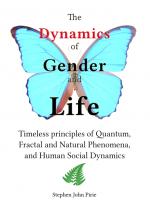Chatting with a friend about a mutual accquaintenance ("dangerous-tree man"), and how it must be a living hell to not feel the benefits and ease of knowing that we are safe.
There is an astonishingly deep and dangerous disconnect between our mainstream world view, and reality. So deep and dangerous is that disconnect I believe it imperils the survival of the human race. That disconnect is demonstrated by modern science's approach: that for every physical effect, there is (in theory) a physical cause. If someone is sick, a physical cause is sought. A bacteria perhaps? Hence the widespread use of antibiotics. It is a simple matter to show that these mechanical-world views are wrong. Dangerously wrong.
Recently while at music festival I started chatting to someon who believes in the "100th Monkey Principle" — for those unfamiliar with the idea, here's an excerpt from Wikipedia
